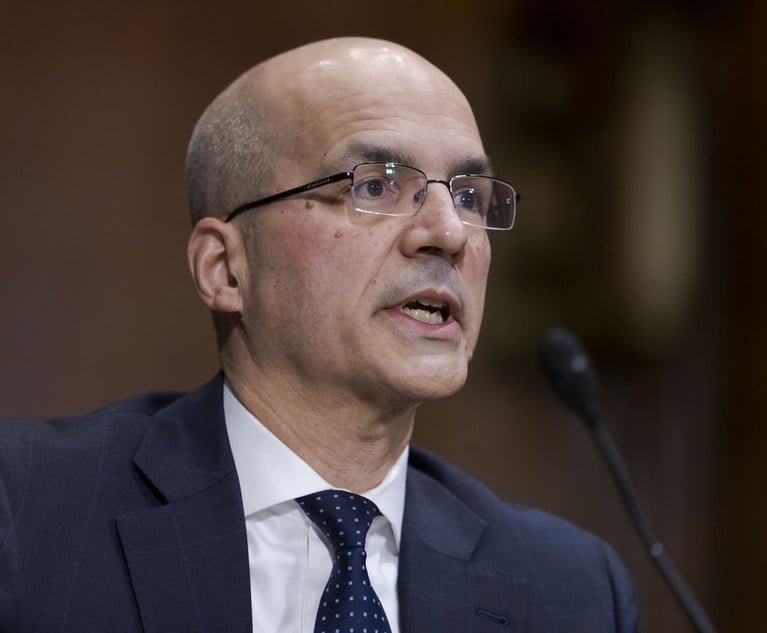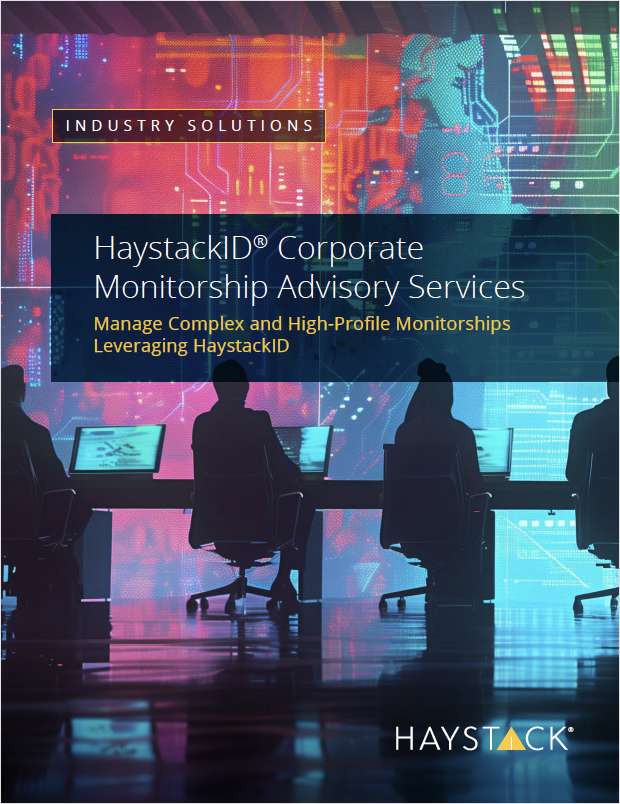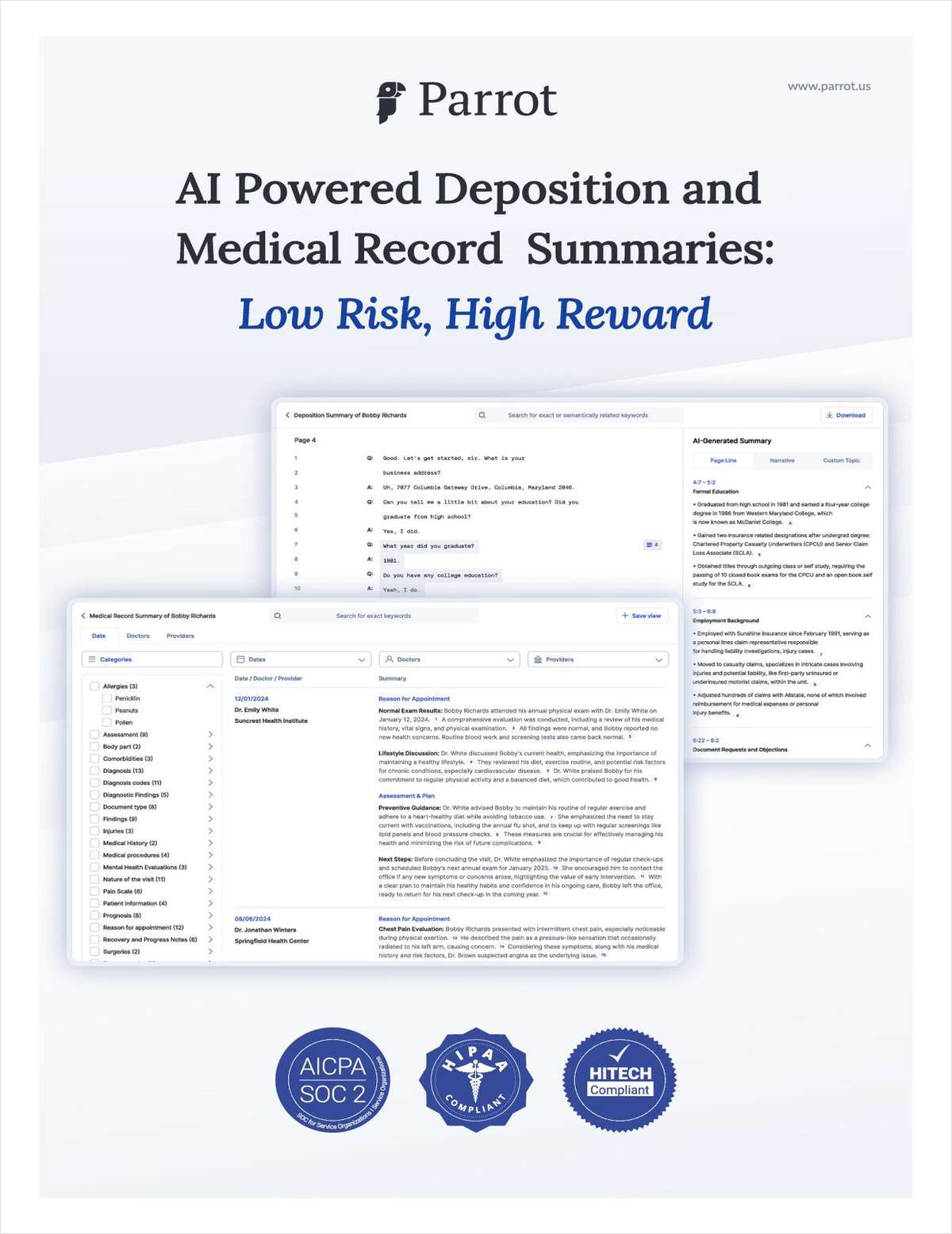RPX Acquisition of Nortel Telecom Patents Underscores a Trend Toward More Licensing
While it is not necessary to be a “rockstar” to reach licensing success, planning carefully to present opportunities for the parties to reach an early compromise may keep your stars aligned.
February 06, 2015 at 02:27 PM
5 minute read
Reconciliation is in the air! And it's not just due to lingering good feelings from the holiday season. According to John Amster, chief executive of RPX, Inc.: “Peace is breaking out.” RPX acquired 4,000 telecom patents this past December so that its subscribers can obtain patented technology rights. “I think people have started to realize that licensing, not litigation, is the best way to make use of patents,” Amster told the Wall Street Journal in December. “[A]nd this deal is a significant acknowledgment of that reality.” RPX reportedly lined up subscribers including Google and Cisco Systems to pay $900 million for important Nortel patents owned by a consortium including Microsoft and Apple called Rockstar Consortium. The RPX subscriber model allows participants to pay a membership fee to the company in order to obtain licenses to these and other patents, enabling them to use the technology and to avoid potential patent litigations.
In 2011, Rockstar acquired a portfolio of 6,000 Nortel patents including the technology involving 4G wireless communications that connect today's smartphones. Both the size of that transaction and its dollar value were “unprecedented” at that time, according to George Riedel, chief strategy officer and president of business units at Nortel. The significant interest in the portfolio by major companies around the world was likewise extraordinary. RPX acquired 4,000 of the original 6,000 Nortel patents from Rockstar. Rockstar and RPX are not the only entities that have recently chosen licensing over litigation. Even vociferous patent owners – such as Apple – have recently settled many lawsuits for smartphone technology including a cross-licensing settlement with arch rival Samsung, outside the U.S.
RPX's acquisition of the Nortel patents provides a convenient – although hypothetical – means to approximate the value of similar types of patents. When you do the math, RPX's acquisition price of $900 million suggests a value of about $225,000 per patent (although no attempt is being made to value particular Nortel patents). This hypothetical valuation does illustrate the statement made by RPX's Amster that litigation may not be the best use of patents. According to the AIPLA's 2013 Report of the Economic Survey; the average patent litigation (with $10 million to $14 million at risk) costs about $2 million in attorney's fees. In many instances it may be difficult to recoup the value of a $225,000 patent in traditional district court litigation proceedings through trial (unless a large group of patents are being asserted in a single lawsuit).
Patent owners who consider and plan for an early exit from litigation, for example through court sponsored mediation, may be better positioned to avoid the disappointment of a low damage award for a low value patent (or even patent invalidation) and the expense of high attorney's fees that come with reaching trial – an expense that may well exceed the value of the patent(s) at issue. They need to be realistic about the potential damages that could be awarded at the end of a long legal battle, and should engage skilled valuators before litigation, to conduct patent valuations early-on and establish reasonable expectations. Although the company may perceive the patent(s) being asserted as its “crown jewels,” the court will require both strong evidence of infringement and carefully constructed damage calculations from experts. A patent owner's reasonable valuation also may encourage an accused infringer to negotiate a licensing deal, instead of challenging the validity of an asserted patent in an Inter Partes or Post Grant Review at the US Patent and Trademark Office.
Payment for a license is especially important for defendants/accused infringers to consider before taking on a rival. Planning a litigation strategy that meets a budget based on a solid valuation of the asserted patent and using a focused litigation strategy that culminates with alternative dispute resolution (ADR), such as mediation, may help defendants accomplish strategic goals more quickly. For example, agreeing to mediate shortly after filing a strong motion for summary judgment or obtaining a favorable claim construction ruling may help facilitate a compromise at the mediation.
Because it offers parties real advantages, including informality, flexibility, more control and a less public forum, while avoiding many of the disadvantages of litigation, including expense, risk and delay, mediation is increasingly being used as tool to promote settlement. When a respected mediator candidly instructs parties of the likely litigation outcomes and provides carefully crafted settlement alternatives, mediation can short-circuit many prolonged disputes.
More ADR options – including but not solely limited to court-encouraged mediation – are becoming available for intellectual property disputes, and more neutrals with subject matter expertise are available to handle complicated technologies. For example, WIPO has specialized patent ADR programs including arbitration, mediation (evaluative or facilitative) and expert determination options that can include neutrals with particular subject matter expertise.
While litigation can be the gateway to present demands and initially frame a dispute; in cases where litigation costs have the potential to overrun the value of the underlying patent(s), parties would be prudent to lay out a patent litigation strategy with potential exit points that might lead to licensing prior to trial. While it is not necessary to be a “rockstar” to reach licensing success, planning carefully to present opportunities for the parties to reach an early compromise may keep your stars aligned.
This content has been archived. It is available through our partners, LexisNexis® and Bloomberg Law.
To view this content, please continue to their sites.
Not a Lexis Subscriber?
Subscribe Now
Not a Bloomberg Law Subscriber?
Subscribe Now
NOT FOR REPRINT
© 2025 ALM Global, LLC, All Rights Reserved. Request academic re-use from www.copyright.com. All other uses, submit a request to [email protected]. For more information visit Asset & Logo Licensing.
You Might Like
View All
Hogan Lovells, Jenner & Block Challenge Trump EOs Impacting Gender-Affirming Care
3 minute read
DC Lawsuits Seek to Prevent Mass Firings and Public Naming of FBI Agents
3 minute read
Divided State Supreme Court Clears the Way for Child Sexual Abuse Cases Against Church, Schools

'Serious Legal Errors'?: Rival League May Appeal Following Dismissal of Soccer Antitrust Case
6 minute readTrending Stories
- 1States Accuse Trump of Thwarting Court's Funding Restoration Order
- 2Microsoft Becomes Latest Tech Company to Face Claims of Stealing Marketing Commissions From Influencers
- 3Coral Gables Attorney Busted for Stalking Lawyer
- 4Trump's DOJ Delays Releasing Jan. 6 FBI Agents List Under Consent Order
- 5Securities Report Says That 2024 Settlements Passed a Total of $5.2B
Who Got The Work
J. Brugh Lower of Gibbons has entered an appearance for industrial equipment supplier Devco Corporation in a pending trademark infringement lawsuit. The suit, accusing the defendant of selling knock-off Graco products, was filed Dec. 18 in New Jersey District Court by Rivkin Radler on behalf of Graco Inc. and Graco Minnesota. The case, assigned to U.S. District Judge Zahid N. Quraishi, is 3:24-cv-11294, Graco Inc. et al v. Devco Corporation.
Who Got The Work
Rebecca Maller-Stein and Kent A. Yalowitz of Arnold & Porter Kaye Scholer have entered their appearances for Hanaco Venture Capital and its executives, Lior Prosor and David Frankel, in a pending securities lawsuit. The action, filed on Dec. 24 in New York Southern District Court by Zell, Aron & Co. on behalf of Goldeneye Advisors, accuses the defendants of negligently and fraudulently managing the plaintiff's $1 million investment. The case, assigned to U.S. District Judge Vernon S. Broderick, is 1:24-cv-09918, Goldeneye Advisors, LLC v. Hanaco Venture Capital, Ltd. et al.
Who Got The Work
Attorneys from A&O Shearman has stepped in as defense counsel for Toronto-Dominion Bank and other defendants in a pending securities class action. The suit, filed Dec. 11 in New York Southern District Court by Bleichmar Fonti & Auld, accuses the defendants of concealing the bank's 'pervasive' deficiencies in regards to its compliance with the Bank Secrecy Act and the quality of its anti-money laundering controls. The case, assigned to U.S. District Judge Arun Subramanian, is 1:24-cv-09445, Gonzalez v. The Toronto-Dominion Bank et al.
Who Got The Work
Crown Castle International, a Pennsylvania company providing shared communications infrastructure, has turned to Luke D. Wolf of Gordon Rees Scully Mansukhani to fend off a pending breach-of-contract lawsuit. The court action, filed Nov. 25 in Michigan Eastern District Court by Hooper Hathaway PC on behalf of The Town Residences LLC, accuses Crown Castle of failing to transfer approximately $30,000 in utility payments from T-Mobile in breach of a roof-top lease and assignment agreement. The case, assigned to U.S. District Judge Susan K. Declercq, is 2:24-cv-13131, The Town Residences LLC v. T-Mobile US, Inc. et al.
Who Got The Work
Wilfred P. Coronato and Daniel M. Schwartz of McCarter & English have stepped in as defense counsel to Electrolux Home Products Inc. in a pending product liability lawsuit. The court action, filed Nov. 26 in New York Eastern District Court by Poulos Lopiccolo PC and Nagel Rice LLP on behalf of David Stern, alleges that the defendant's refrigerators’ drawers and shelving repeatedly break and fall apart within months after purchase. The case, assigned to U.S. District Judge Joan M. Azrack, is 2:24-cv-08204, Stern v. Electrolux Home Products, Inc.
Featured Firms
Law Offices of Gary Martin Hays & Associates, P.C.
(470) 294-1674
Law Offices of Mark E. Salomone
(857) 444-6468
Smith & Hassler
(713) 739-1250








